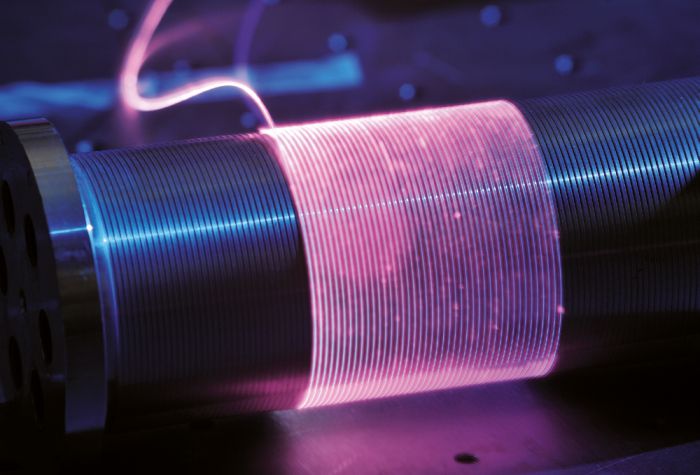In recent years, the use of laser fibre technology has become increasingly significant across various sectors. Its ability to enhance optical performance makes it a valuable tool for many applications. This post explores the fundamentals of laser fibre, its applications, and how it optimizes optical performance.
Understanding Laser Fibre
Laser fibre technology transmits laser beams using optical fibres. These are specially engineered fibres for light guidance with small losses. This makes it ideal for many applications as it improves both speed and accuracy. The basic building block of this technology is an optical fibre having a core, cladding, and coating. The core carries the light and then reflects it into the core by the cladding, effectively enabling very little dispersion.
Applications of Laser Fibre
Laser fibre finds applications in telecommunications, medicine, and manufacturing. For example, it is extensively used in telecommunication to transmit data over long distances with high speed and reliability. It has been applied in surgeries and treatments by medical professionals, providing pinpoint accuracy and faster recovery periods. It has a role in manufacturing, helping cut, weld, and mark materials with great precision and speed.
Telecommunications

This type is used for transferring data in the telecommunications industry. Fiber optics enable the quick transmission of huge amounts of data, which is why it is necessary for high-speed Internet and communication services. This technology helps to reduce signal loss and interference, resulting in clear and reliable connections.
Medicine
Laser fibre technology is a revolution in medicine. It enables minimally invasive procedures with quicker recovery and better results. It helps maintain a precise cut and coagulation, minimizing damage to surrounding tissues. This precision is needed when performing delicate surgeries like eye or brain surgery.
Manufacturing
Manufacturers use laser fibre for accuracy and speed. Laser cutting and engraving allow for accuracy, which is important for complex designs and detailed work. This technology also makes welding more efficient by producing cleaner and stronger joints. It reduces the amount of wasted materials and the quality of the product.
Enhancing Optical Performance
Laser fibre technology optimizes optical performance by reducing signal loss and improving accuracy. The design of optical fibres minimizes light dispersion, ensuring that signals remain strong over long distances. This is crucial in telecommunications, where maintaining signal integrity is vital.
Precision and Accuracy
When it comes to precision, laser fibre is second to none. The precision targeting that this technology offers functions in both medical and industrial contexts. With precision, tasks can be done right at the very first instance, saving both time and cost.
Benefits of Laser Fibre
Laser fibre technology has multiple advantages. It provides greater efficiency, accuracy, and reliability in different fields. Each of these benefits encourages it to be an esteemed answer for ventures trying to advance their procedures.
Efficiency
Laser fibre is very effective for this. Quick and precise data dissemination saves time and money. This results in mellowed processes with better outcomes within the industries, thereby increasing productivity.
Reliability
Another advantage of this technology is reliability. Everything goes fine when the risk of loss and outside interference diminishes. This reliability is essential in fields where little room for error exists.
Cost-Effectiveness
While the upfront costs of laser fibre technology can be high, the long-term savings are massive. Over time, this translates into savings in maintenance costs and increased efficiency, making it an affordable option for many companies.
Future Prospects
Laser fibre technology has a bright future. It still undergoes research and development, which enhances its performance. With technological advancement, it is likely to be increasingly embedded in different industries.
Innovations in Telecommunications
Further advancements will continue to develop higher data transfer speeds and faster service reliability. This could bring forth a new era of connection and communication between individuals and businesses. Find high tech solutions at Ausoptic.
Medical Advancements
Laser fibre technology will assist the medical field with surgical techniques and better patient outcomes. Ongoing innovations should create fresh treatments and procedures and improve the standard of health care.
Industrial Developments
If you are in the manufacturing sector, future innovations in laser fibre technology will deliver improved accuracy and efficiency. This will improve product quality and curb waste, which will benefit both manufacturers and consumers.
Conclusion
Fiber Laser Technology: The Key to Greater Optical Performance. The wide reach in telecommunication, healthcare, and manufacturing is another proof of its versatility and efficiency. As research continues, laser fibre will expand its originally mentioned role in more sectors, improving efficiency, accuracy, and reliability everywhere. With ongoing investments in this unique technology by various sectors, the potential advantages are expected to flourish, making laser fibre an essential component of modern technological development.
Post Comment
Be the first to post comment!





